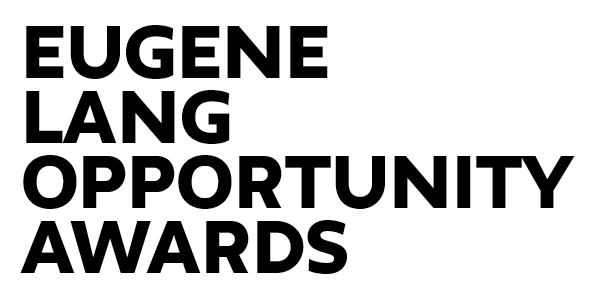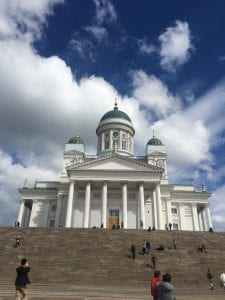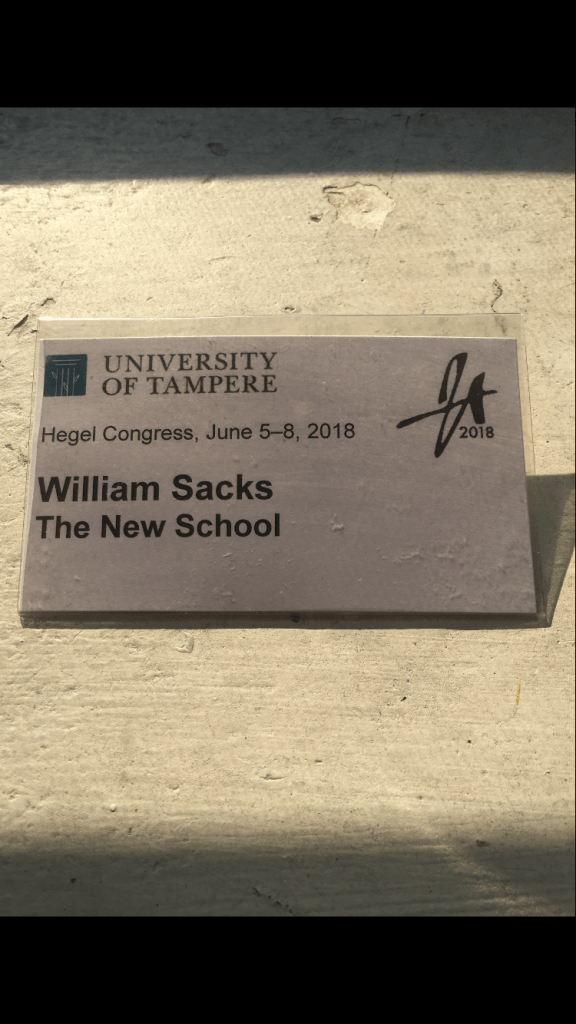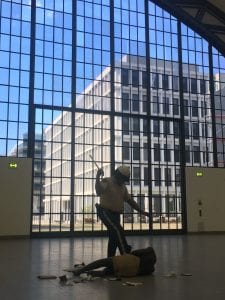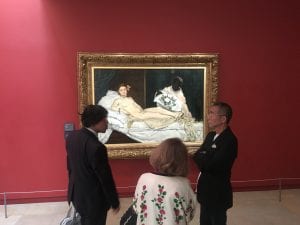For the first three weeks of June 2018, I embarked on a trip through Europe which was planned as an extension of the work I produced for my senior capstone. I traveled to Tampere, Finland for the 32nd International Hegel Congress and then visited art institutions in Berlin, Paris, and London.
My capstone, a paper on the linkage between G.W.F. Hegel’s aesthetic philosophy and the conception of the modern (specifically in painting), jolted my curiosity on two fronts: I wanted to hear and participate in contemporary discussions of Hegel’s corpus and I wanted to confront the painting I chose as the example for my capstone, Édouard Manet’s Olympia, in person. So, with a boost from the ELOA I traveled to Finland for the 32nd International Hegel Congress which had Hegel’s ‘encyclopaedic system’ as its theme.
I was already somewhat familiar with Part I of Hegel’s “Encylopedia of the Philosophical Sciences in Basic Outline”, which stands as a sort of handbook for the larger, more demanding “Science of Logic”. The work I completed for my thesis was supportive in taking in all of the Hegelian jargon one is to expect at a Hegel conference. The conference itself was a fantastic opportunity to see exactly how professors and students alike share their work and offer it up for critique. The attendees (mainly professors, doctoral and post-doctoral students) numbered somewhere around 150-200. It was definitely a good turn-out in Tampere, Finland’s “second city” about two hours north of Helsinki where the sun never truly sets in the summertime and social welfare is a main political concern. Many keynote papers were given by esteemed professors and time was alotted for parallel sessions where graduate scholars shared their own work.
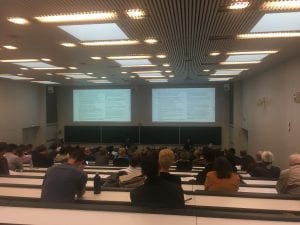
Keynote speaker Prof. James Kreines (Claremont McKenna) delivers his paper, “Metaphysical Definitions of God and Absolute Idealism as Unifying Hegel’s System” at the University of Tampere
Following my stay in Tampere, I flew across the Baltic Sea to Berlin and began the second part of my trip where I sought to understand the European museum and the relational structures which under-gird the institution and its collected artworks. The Hamburger Bahnhof, the Pergamon Museum and Neues Museum on Museumsinsel, and the Martin-Gropius-Bau were some of the stops I made in Germany’s capital.
From Berlin I flew to Paris, where my main task of visiting Olympia at the Musée d’Orsay was supplemented by visits to Centre Pompidou, Musée du Louvre, Musée national Picasso-Paris, Musée Rodin, and Fondation Louis Vuitton. Seeing Manet’s painting in person did not defy my expectations. It looked as I imagined it would look; it is a painting, not small, not particularly large. But looking up close at Manet’s rough brushstrokes and the details which reveal themselves in close-viewing was a great experience. The painting itself is placed in a gallery on the ground floor of the Musée d’Orsay far back from the entrance. Not difficult to get to, but definitely a place for the artwork that may require some directions (also since other Manet paintings including his Le Déjeuner sur l’herbe are displayed on the top floor of the museum). Olympia is positioned alongside other paintings by Manet and next to a set of stairs which lead to the paintings of other contemporary Salon artists whose work, seen after encountering Olympia, underlines how truly different Manet’s painting was from the academic, widely-received paintings of the time. The curatorial decision to give Olympia its own space away from its contemporaries may just be one which leaves room for tourists to hover around the famous painting, or the sheer difference between Olympia and the kitschy academicism of 1860s Salon painting may afford Manet’s artwork its own domain.
The last leg of the trip was spent in London where the museum-going continued at the National Gallery, Tate Modern, Tate Britain, Whitechapel Gallery, and private gallery, White Cube.
Being present for the exchange and presentation of ideas and artworks at both the Hegel conference and the various European art museums was a rewarding experience which will surely influence the academic/non-academic work I intend to produce in the future.
